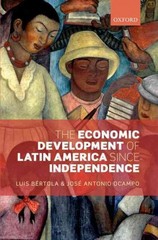Question
Please use question 1 below (i already solved it) to help answer question 2 Problem 1 According to the problem set, Marginal Cost ($40) is
Please use question 1 below (i already solved it) to help answer question 2
Problem 1
According to the problem set, Marginal Cost ($40) is equal to ATC for linear cost functions. Therefore:
P=120-2qi
Q=i=1100qi = 100qi
MC=AVC=$40
f=$50,000
- Since Q above is the sum of total sale to customers, the LM cost function becomes:
C(Q)=f+AVC(Q)
C (Q) = 50,000 + 40Q
- To maximize profit at uniform price for each individual customer, MR should be equal to MC:
MC=MR
MR = 120 - 4qi
40=120 - 4qi
qi = 20
P = 120 - (2)(20) = 80
This means that in order to maximize monopoly profits at uniform prices for individual seat licenses, they will need to buy 20 licenses at $80/license per year.
- Profits we will earn under uniform pricing for selling 20 licenses to 100 customers would be given by the following:
=TR-TC=PQ-C(Q)
= PQ - C(Q) = (80)(20)(100) - (50,000 + (40)(2,000))
= $30,000
For our selected strategy, Group K advocates strongly for the block pricing strategy.
The shaded area above shows the price each should be sold at, which includes 40 licenses. Moreso, the willingness to pay should be higher than the variable cost per unit. Note that the area of the bottom triangle is the variable cost.
=12 (80)(40) + (40)(40) = $3,200
Profit = 1003,200 - (40)(40) - 50,000
= $110,000
Problem 2
You solved the problem above assuming that LM was a monopoly provider of the AI software. This is what you will turn in to me via the online portal. As for your 5-minute class presentation, I want you to instead assume that there is potential competition in the market from other software firms. They see your pricing strategy and the handsome profits that you have generated, and they are jealous. They are thinking of designing a competing product and jumping in to steal some of your customers. You are free to assume anything you want about the extent of that competition. Formulate a strategy to limit entry and therefore competition in your industry, so that you are able to maintain your market power sufficiently to price as you have suggested in Problem 1. Note that this strategy would have been something that you implemented prior to any knowledge of the potential competition. Fundamentally, the question is "how can you limit competition by raising the sunk costs of entry for another firm in a sustainable manner?"3 Of course, that is a particularly dry and boring description of the problem, so be creative (but realistic). You are free to use insights and ideas from other courses or your own experience, of course, or rely on historical examples that you think may be useful to replicate. And, of course, if you can find a way to relate it to your chosen pricing strategy, even better. 3 I am not using "sustainable" in the environmental sense, but in the long-term sense. Raising entry barriers once may be straightforward, but the point of Sutton's analysis is to show that incumbent firms can use strategy to continually raise those entry barriers as the market grows. The strategy is necessarily "dynamic." And recall that "limiting competition" means higher industry concentration, and therefore more market power. Without that market power, a firm would not even be able to choose a non-uniform pricing strategy such as you are advocating here.
UT MBA - Houston 5-minute pitch: mpeg video Group Project 2 Problem 1 and video due: Sunday, July 3 at 11:59pm This does not need to be long. Your group is a collective strategist that is going to make its 5-minute pitch to senior management (the rest of the class). Once person gives the pitch. Make it work, baby! Nothing to turn in here. Hints: In the past, the best presentations were those that attempted to develop a strategy that was dynamic, so that the sunk costs of potential entry are designed to increase as the market grows. This is the essence of Sutton's theory. The presentations that were less effective were those that just gave a list of strategies intended to limit entry, with no real substance to any of them. Having said that, if you want more options to discuss, the following table is from Besanko, Dranove, Shanley and Schaefer, The Economics of Strategy (6th edition). This provides a list of entry barriers that goes beyond what we discussed in class and is not difficult to follow. There is one thing that I am not happy about, however. Note that "Sunk Costs" as postulated by Sutton is the first entry barrier listed. But other entry barriers, including "Reputation," "Switching Costs," and some of the entries under "Production Barriers" can be interpreted as examples of strategies intended to increase the sunk costs of entry. So, I don't think all of the categories are mutually exclusive, but they are still interesting and potentially useful.
Step by Step Solution
There are 3 Steps involved in it
Step: 1

Get Instant Access to Expert-Tailored Solutions
See step-by-step solutions with expert insights and AI powered tools for academic success
Step: 2

Step: 3

Ace Your Homework with AI
Get the answers you need in no time with our AI-driven, step-by-step assistance
Get Started


